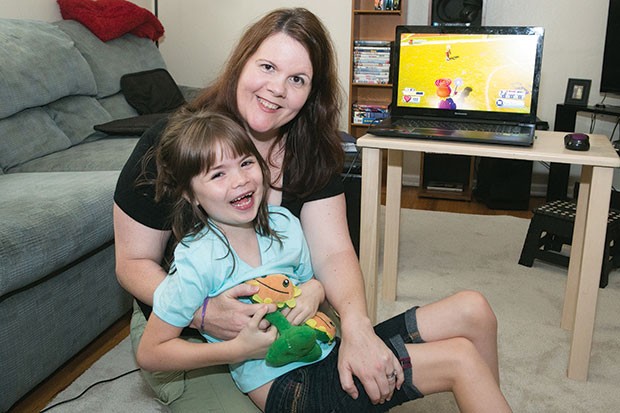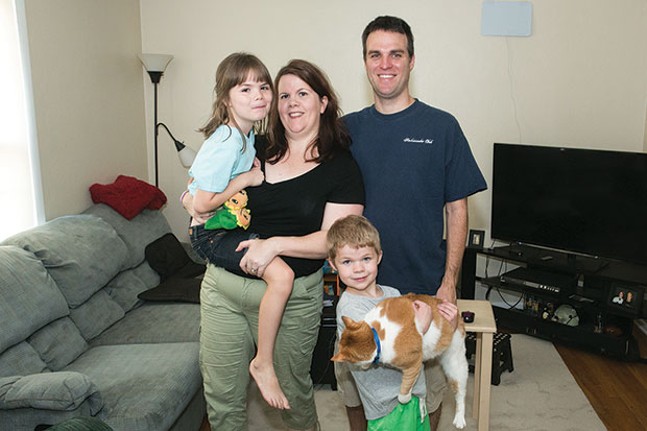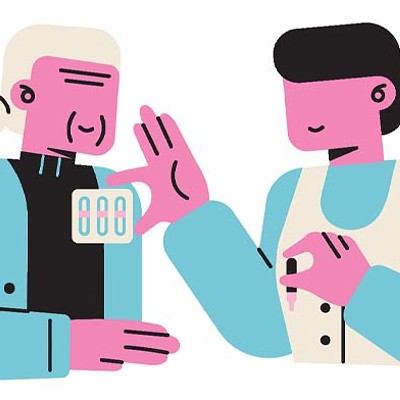Two in every five children in Pennsylvania are on Medicaid.
The fact is that more children in Pennsylvania rely on Medicaid than any other segment of the population.
The future of Medicaid is unclear however, as U.S. House and Senate bills, as well as President Donald Trump’s budget, have sought cuts to the program. It’s been proposed that Medicaid funding be restructured into either per capita caps or block grants.
“The real concern is that even if they don’t end up cutting it very much, if they get the structure in place where they could cap it or convert it to block grants, then it becomes easier over subsequent years to reduce it,” says Vanessa Rastovic, policy manager at ACHIEVA, an advocacy organization for people with disabilities. “Initially, the cuts might not seem so bad, but then the mechanism is there to severely cut it later on.”
Regardless of which method is enacted, there are going to be funding gaps. “Under caps as well as block grants, states will face a gap between the costs of providing coverage and the federal funds available to offset those costs,” writes Sasha Pudelski, assistant director of the School Superintendents Association, in a January report entitled “Cutting Medicaid: A Prescription to Hurt the Neediest Kids.”
Currently, federal funding fluctuates to match states’ health-care costs. Under block grants or per capita caps, Medicaid funds would have a pre-set limit, either in a lump sum to be divvied up at the state’s discretion, or set at a limited amount per enrollee. If a state’s needs exceed federal funding, the state will either have to cover the costs, reduce services offered or limit enrollment. The Congressional Budget Office reported that if the Senate bill had passed, 22 million fewer Americans would have health insurance by 2026.
That prospect scares parents like Casey Dye of Monroeville.
“Medicaid is a lifeline for my daughter,” says Dye, whose daughter Chessie receives therapies for her severe speech and language delay. Though Chessie is now 8, she communicates at the level of a 3-to-5-year-old. Dye says that when her husband lost his job in 2015, they turned to Medicaid.
Dye, a licensed practical nurse, says that private insurance wouldn’t provide adequate care to her daughter.
“A lot of private insurers do not recognize speech and language delay, so some of them would not cover it at all. Or, if you’re lucky, they might give you 10 [therapy] sessions a year. How can you plan those 10 sessions a year out and have it be effective?” Dye says. “You can’t.” Though it is sometimes claimed that Medicaid coverage is very limited, for many families it actually allows them access to more care than private insurance does.
“Overwhelmingly, people that have Medicaid are happy with their coverage,” says Erin Ninehouser of the health-care advocacy group, Pennsylvania Health Access Network. “I hear stories all the time from parents for whom it’s their secondary insurance to cover their kids with disabilities. They say that it gives them access to doctors and care that they couldn’t have afforded with the co-pays [through] their private health insurance.”
Chessie currently attends 10 speech- and occupational-therapy sessions a week, some of which are at her school, University Park Elementary, and are also funded by Medicaid. Schools have been able to register as Medicaid providers since 1988, allowing them to receive reimbursement for the care they provide to students who are covered by the policy. In Chessie’s school district, Gateway, 29 percent of students are on Medicaid. At Pittsburgh Public Schools that number is 50 percent.
“We want to make sure that kids are healthy enough to learn, and sick kids can’t learn,” says Pudelski, of the School Superintendents Association. “[Medicaid] allows schools to address the health barriers to learning that kids have.”
While only about 1 percent of federal Medicaid dollars go to schools, Medicaid can have a large impact on the quality of care and education provided to students with health concerns or disabilities.
“I just wish that in 2017, I didn’t have to worry if my daughter was going to have health care or not,” Dye says. Without Medicaid, Chessie’s therapies would cost her family $2,240 a month.
“I feel like some of our congressmen and [congress]women who are supposed to be fighting for our children are the ones who are putting up [more] roadblocks that she’s going to have to hurdle over to get where she needs to be.”
For families like Chessie’s, the future is uncertain. They wonder whether Medicaid will be cut and how it might affect them. They lose sleep at night worrying about how they will care for their child if Medicaid is taken away from them.
“We just want what every other parent wants,” says Dye. “We want our daughter to have a great childhood.”




















